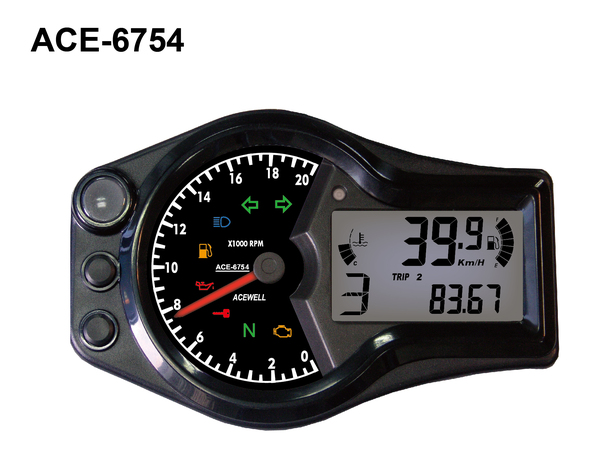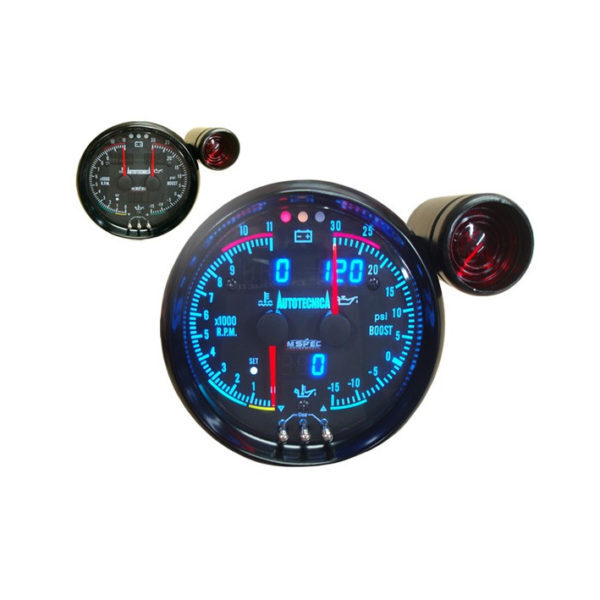Boost Your Driving Experience with a Reliable Tachometer
Boost Your Driving Experience with a Reliable Tachometer
Blog Article
Unlocking the Secrets of Tachometers: Everything You Required to Learn About This Essential Tool in Your Automobile
Comprehending the complexities of tachometers can offer valuable understandings right into your car's performance and upkeep demands. From determining engine speed to deciphering the data it offers, tachometers work as an essential tool for lorry proprietors and enthusiasts alike. By untangling the enigmas behind this vital instrument, you can open a riches of information that can boost your driving experience and guarantee the longevity of your automobile.
Significance of Tachometers
The significance of tachometers depends on their ability to give important real-time data regarding an engine's rotational speed, enabling accurate surveillance and maintenance of equipment. By measuring the changes per minute (RPM) of an engine's crankshaft, tachometers supply important understandings into the engine's efficiency - tachometer. This data is necessary for ensuring that the engine runs within its optimal variety, staying clear of potential damages from over-revving or underperforming
Tachometers play a vital function in aiding operators and professionals spot any kind of anomalies in the engine's speed, which can indicate problems such as gas inefficiency, mechanical problems, or extreme pressure on the engine. By promptly determining these concerns through tachometer readings, upkeep can be executed proactively, avoiding expensive fixings and downtime over time.
Furthermore, tachometers are specifically crucial in high-performance cars and equipment, where specific control over engine rate is necessary for optimal operation. Racing cars and trucks, airplane, and commercial tools count on tachometers to provide peak efficiency while preserving safety and security criteria. Basically, tachometers are not just instruments for gauging rate yet indispensable tools for making certain the smooth and effective operation of engines across different applications.
Exactly How Tachometers Procedure Engine Rate
Utilizing sensing units that find the frequency of electric pulses produced by the engine's ignition system, tachometers accurately gauge the rotational rate of an engine. By keeping track of the price at which these pulses are gotten, tachometers offer real-time responses on exactly how fast the engine's crankshaft is revolving per minute, generally referred to as revolutions per min (RPM)
The tachometer's sensor, usually linked to the engine's ignition coil or ignition system cables, gets the electric signals produced each time a cyndrical tube fires. These signals are then transformed into RPM readings presented on the gauge or tool cluster within the vehicle driver's view. Tachometers can be analog or electronic, with modern automobiles commonly including electronic screens for specific and instant RPM analyses.
This information is vital for chauffeurs to comprehend the engine's efficiency, avoid over-revving, maximize gear shifting, and make certain efficient fuel intake. By accurately determining engine rate, tachometers play a vital function in assisting vehicle drivers operate their automobiles securely useful content and efficiently.
Interpreting Tachometer Analyses
Having a clear understanding of how tachometers determine engine speed establishes the structure for effectively translating the RPM analyses presented. Analyzing tachometer readings is essential for ideal automobile efficiency and engine wellness. RPM (Revolutions Per Minute) readings on the tachometer suggest the speed at which the engine's crankshaft is turning. When the engine is idling, the tachometer needle commonly relaxes around 600-1000 RPM, depending on the vehicle. As you accelerate, the RPM will enhance, showing the engine's higher rotational speed. When moving gears in a hands-on transmission automobile, the RPM will certainly go down as you engage the clutch and modification gears, then climb again as you accelerate in the new gear. Keeping track of the tachometer can help you identify the most efficient shifting factors to optimize gas economic climate and engine power. Furthermore, unusual fluctuations or consistently high RPM readings can show prospective problems with the engine that may require specialist interest. By focusing on the tachometer readings and understanding just how to analyze them, you can ensure your vehicle runs efficiently and effectively.


Tips for Utilizing Tachometers Efficiently
To boost driving efficiency and maximize engine performance, what trick techniques can be applied for efficiently making use of tachometers? Tachometers are important devices that offer real-time responses on engine speed, making it possible for drivers to make educated decisions for much better efficiency - tachometer. Here are some ideas for making use of tachometers efficiently:
Understanding Ideal RPM Variety: Acquaint on your own with the optimal RPM (Revolutions Per Minute) variety for your automobile. Maintaining the engine within this array can improve fuel effectiveness and extend the engine's life expectancy.
Shifting Equipments at the Right Time: Make use of the tachometer to determine the best time to change equipments. Purpose to change equipments when the RPM gets to the ideal variety for the next gear.
Keeping Track Of Engine Tension: High RPMs for prolonged periods can stress the engine. Watch on the tachometer to stop over-revving, specifically throughout acceleration or when carrying heavy lots.
Tachometers and Lorry Upkeep
When thinking about car maintenance, tachometers play an essential role in checking engine efficiency and finding prospective problems. Tachometers provide essential information on engine rate, allowing drivers and technicians to make sure that the engine is operating within the advised RPM array. On a regular basis keeping track of the tachometer readings can aid determine troubles such as engine misfires, damaged spark plugs, or concerns with the fuel delivery system. By focusing website link on the tachometer, chauffeurs can avoid too much stress on the engine, which can lead to pricey repair work down the line.
Along with identifying potential problems, tachometers can additionally aid in maximizing why not try these out fuel effectiveness. By maintaining the engine rate within the optimal variety, vehicle drivers can improve their gas mileage and minimize gas usage. This not just profits the driver's budget yet also contributes to ecological preservation by decreasing hazardous discharges.
Verdict

Report this page